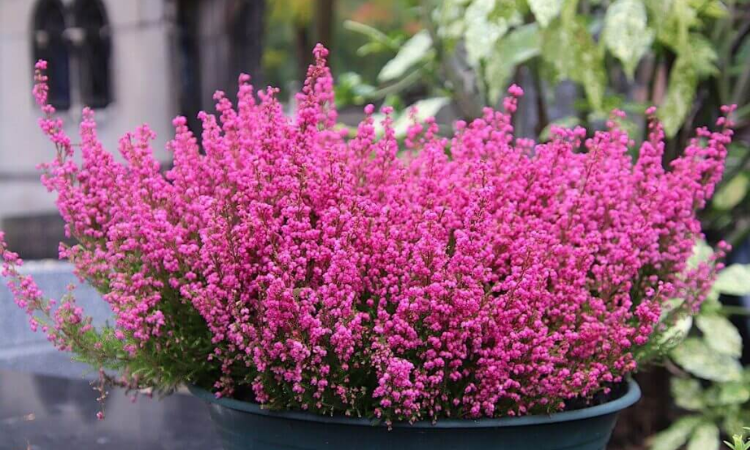How to Revive a Buxus Plant?: The Buxus plant has become a popular addition to gardens due to its attractive green foliage and capacity to thrive in a variety of conditions. However, even the most resilient plants can periodically show signs of distress, leaving their caretakers at a loss for how to bring them back to health. If your Buxus plant starts showing signs of illness, you shouldn’t worry. In this piece, you’ll learn how to revive your Buxus plant such that it not only lives but thrives.
Recognizing the Stress Symptoms in Your Buxus Plant
Distemper and wilting leaves
Your Buxus plant’s leaves are often the first to exhibit indications of trouble. The symptoms of wilting or discoloration may be related to environmental stress or a lack of nutrients. Pay close attention to the specific type and distribution of discoloration, since this will form the basis of your diagnosis.
Slowed Development and Leaf Fall
Slow growth and leaf loss are additional symptoms of stress in Buxus plants. This could be brought on by things like pests, inadequate soil, or insufficient sunlight. If you know exactly what signs to look for, you may tailor your rejuvenation strategy to maximize its effectiveness.
Identifying the Primary Cause
Examining the Ground
Before beginning the regeneration process, the soil’s condition should be assessed. Buxus plants thrive in slightly acidic to neutral soil with good drainage. Perform a soil test to determine the soil’s nutritional levels, then fix it as needed. Fixing soil deficiencies can have a major effect on the plant’s overall health.
Watering Methods and Natural Lighting
Your Buxus plant needs enough light and consistent watering in order to thrive. Make sure it gets plenty of early morning sunshine. Overwatering or underwatering can be stressful for your plant, so find a happy medium. You may revive your eco-friend by tweaking just these central features.
Trimming and styling methods
Getting rid of the Brown or Yellow Leaves
Pruning your Buxus plant is a relaxing hobby. To improve circulation and allow the plant to put its resources where they will do the most good, remove any yellowing or dead leaves carefully. This helps the plant heal in addition to boosting its appearance.
Modeling for Enhanced Growth
If you want to foster a more robust and symmetrical growth pattern in your Buxus plant, think about shaping it. This method does more than just make the plant seem better; it also promotes growth. Avoid adding to the plant’s stress by using clean, well-maintained tools.

Implementing Fertilization Methods
Choosing the Right Fertilizer
When trying to revive a Buxus plant, it’s important to give careful thought to the fertilizers you use. Pick a fertilizer with a high concentration of nitrogen, phosphate, and potassium that breaks down slowly. The plant will get the nutrients it needs to recover, but not too much.
Correct Fertilizer Application
Timing is crucial when fertilizing a stressed Buxus plant. When the plant is actively growing, in the spring and early summer, apply the appropriate fertilizer. Fertilizer burn can be avoided and steady growth achieved by sticking to the recommended dosage guidelines.
Tips for Managing Pests
Being Aware of Common Bugs
Pests can put a Buxus through a lot of stress. Spider mites and boxwood leafminers are two frequent pests to keep an eye out for. If you can identify the specific insect that is causing damage to your plant, you can choose effective, tailored treatments.
Both Man-Made and Organic Answers
Chemical treatments or natural therapies can be used to eliminate pests, depending on personal preference. Natural remedies such as neem oil and insecticidal soap are efficient, but chemical treatments can be faster and more forceful. Always read the instructions carefully before using a new product.
In a nutshell:
Reviving a dying Buxus plant calls for an all-encompassing plan that addresses not only the symptoms but also the underlying causes. By paying attention to the signs of stress, determining the root reason, using grooming techniques, strategically administering fertilizer, and effectively eliminating pests, you can give your green companion a new lease on life.
When trying to revive a Buxus plant, it’s important to give careful thought to the fertilizers you use. Pick a fertilizer with a high concentration of nitrogen, phosphate, and potassium that breaks down slowly. The plant will get the nutrients it needs to recover, but not too much.
Keep in mind that fixing things takes time. If you give your Buxus plant some TLC, it will blossom again, bringing vibrant color to your garden. Congratulations on a productive garden!
I hope you like the part where we talked about How to Grow Purple Sprouting Broccoli. For more content like this, visit our website VariegatedPlantz.com.

